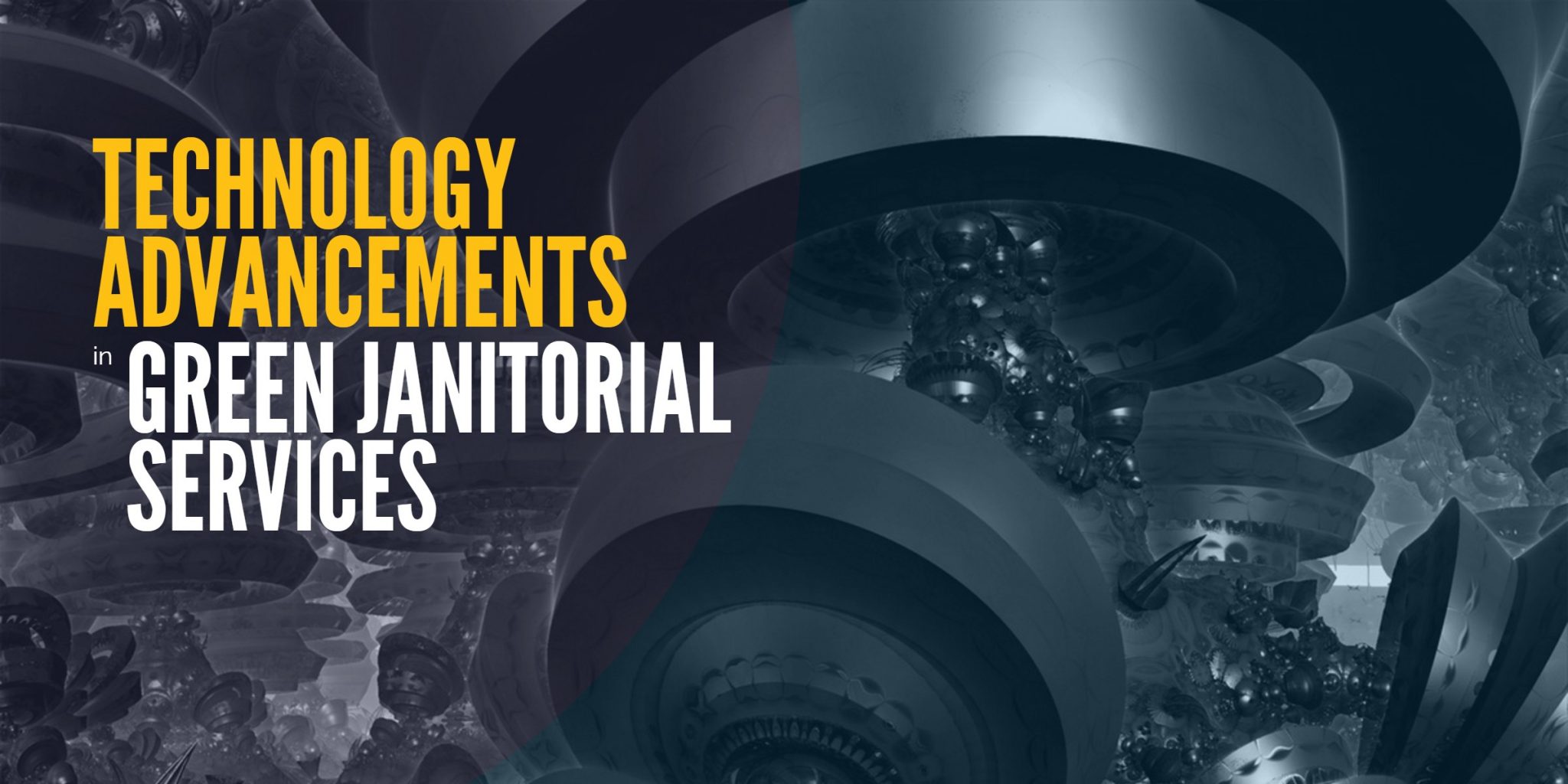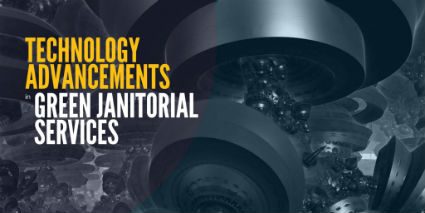Technological advancements in green janitorial services may help eliminate the use of unhealthy chemicals currently utilized in many of our homes, schools, hospitals, and offices.

Advancements in Green Janitorial Services
Green janitorial services--a revolution that began with the lofty ideology of a healthier world--has matured into the modern era.
In the past, technological advancements, like Microfiber, allowed for a healthier, chemical-free cleaning, which used fewer resources (water and energy) and did not contribute toxic chemicals to the environment.
Probiotic cleaners are another emerging technology that sterilizes surfaces more efficiently than conventional, chlorine-based disinfectants but are biodegradable and eco-friendly.
Cleaning systems of the future will leverage the power technology for;
- WiFi connected robotic vacuums, sweepers, and floor scrubbers.
- Engineered water.
- Nano-coated, self-cleaning surfaces.
- Internet of Things (IoT) connected device monitoring and management, and;
- No-touch room disinfection.
Robotic Automation
As business costs continue to rise, the need for cost-effective and efficient solutions continue to increase.
Robotic sweepers, vacuums, and floor scrubbers offer an economical solution while ensuring a high standard of cleanliness.
Combined with the power of WiFi, the devices can be tracked, allowing for the potential monitoring of;
- System performance; vital for monitoring energy and resource use efficiency.
- Device tracking; essential for locating needed equipment, and potentially able to map, improve, and program cleaning paths to improve effectiveness, and;
- Device reporting; allowing for the collection of more thorough business intelligence.
For More Information:
Engineered Water
Engineered water has numerous cleaning applications; though not appropriate for the sterilization of contaminated surfaces, it has been shown to be highly effective at dirt removal with some essential antimicrobial characteristics.
Activated, ozonated, electrolyzed, or otherwise treated tap water is used at high temperatures (app. 250 degrees) to remove built-up dirt, oil, and grease without chemicals.
The high temperatures are enough to kill many bacteria and, when combined with microfiber, present a compelling green cleaning solution that uses nothing more than water and, typically, a minor electrical current, saving thousands of dollars in chemical purchases and untold damage to the environment.
For More Information:
Self-Cleaning Surfaces
Self-cleaning or photocatalytic surfaces are "probably the most wide-spread application ascribed to nanotechnology in the construction industry."
NanoWerk described the relevant process of photocatalysis as;
[sic]...in the presence of water, oxygen radicals are produced under UV light irradiation which in turn can decompose organic material such as, for example, fats, oils, soot or plant materials.
A weakness currently inhibiting the adoption of self-cleaning surfaces are its reliance on direct UV light to trigger catalysis.
Current research is attempting to navigate through this issue to allow for use in hospitals, and other applications.
As photocatalysis can also kill microorganisms, it is conceivable that antimicrobial coatings may be produced in the future, for example for use in clinical areas, and this is now being researched.
-Nanotechnology solutions for self-cleaning, dirt and water-repellent coatings
Internet of Things
Janitorial services companies do not just provide cleaning services; they often offer stocking and replacement services for soap, paper towels, and toilet paper.
IoT presents several significant opportunities for businesses to reduce costs and increase customer satisfaction via more informed resource management and response times.
Aside from robotic scrubber management, current IoT applications include the monitoring and reporting of soap dispenser and paper towel usage.
Resource utilization is monitored, and triggers are configured for certain thresholds, alerting the facilities manager and janitorial staff that machines need to be refilled.
Additionally, traditional cleaning schedules rely on assumed facilities use, however, a correlation between above average use can be established through business intelligence analysis, allowing for more efficient scheduling of cleaning and maintenance cycles, saving the organization money on unnecessary cleaning cycles for low-use facilities, while improving service response times for higher use locations.
For More Information:
No-Touch Cleaning
No-touch UV sterilization systems are currently employed in airplane lavatories to eliminate harmful bacteria, while hospitals are beginning to adopt UV-C and Hydrogen Peroxide based systems to clean patient areas.
This technology could potentially address issues achieving desired levels of sterilization, though cost, time to clean, and the requirement to empty the room of all personnel have proven prohibitive to wide-scale adoption.
No-touch cleaning systems are a recommended solution to address inadequate levels of sterilization in hospitals.
[sic]...while interventions aimed at improving cleaning thoroughness have demonstrated effectiveness, many surfaces remain inadequately cleaned and therefore potentially contaminated.
For this reason, several manufacturers have developed room disinfection units that can decontaminate environmental surfaces and objects.
These systems use one of two methods; either ultraviolent light or hydrogen peroxide.
There are positive and negative aspects of either system, for instance;
- UV systems are faster and easier to use, but less efficient at pathogen elimination, and require line-of-sight to be effective.
- Hydrogen Peroxide Vapor systems take longer, need ventilation after cleaning, but are more efficient and pathogen removal and do not require line-of-sight.
However, studies have shown the efficacy of pulsed xenon UV light on the elimination of MRSA, stating;
[sic]...PX-UV light effectively reduces MRSA colony counts in the absence of manual disinfection.
References
- How the Internet of Things can lead to cleaner, liveable cities
- Superhydrophilic self-cleaning surfaces based on TiO2 and TiO2/SiO2 composite films for photovoltaic module cover glass
- Cleaning Industry Embraces Internet Of Things
- Cleaning Industry Embraces Technology
- Modern technologies for improving cleaning and disinfection of environmental surfaces in hospitals
- No-touch cleaning for high-touch surfaces
Takeaway
As business costs continue to increase, organizations will need to adopt new technologies to keep pace with dynamic customer demands and expectations.
Chemical-free green cleaning reduces operational costs while complying with modern environmental concerns.
By leveraging technologies and lessons learned from other industries, specifically IoT, businesses will gain valuable insight into current operations which can be used to make intelligent decisions to reduce financial and resource waste while improving performance and increasing customer satisfaction.
If you would like to learn more about the benefits of professional janitorial services for your business, contact us today for a free quote!
In Bakersfield CA, call (661) 395-3009
In Fresno CA, call (559) 473-1790

